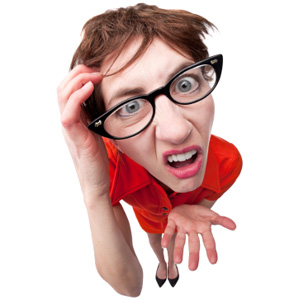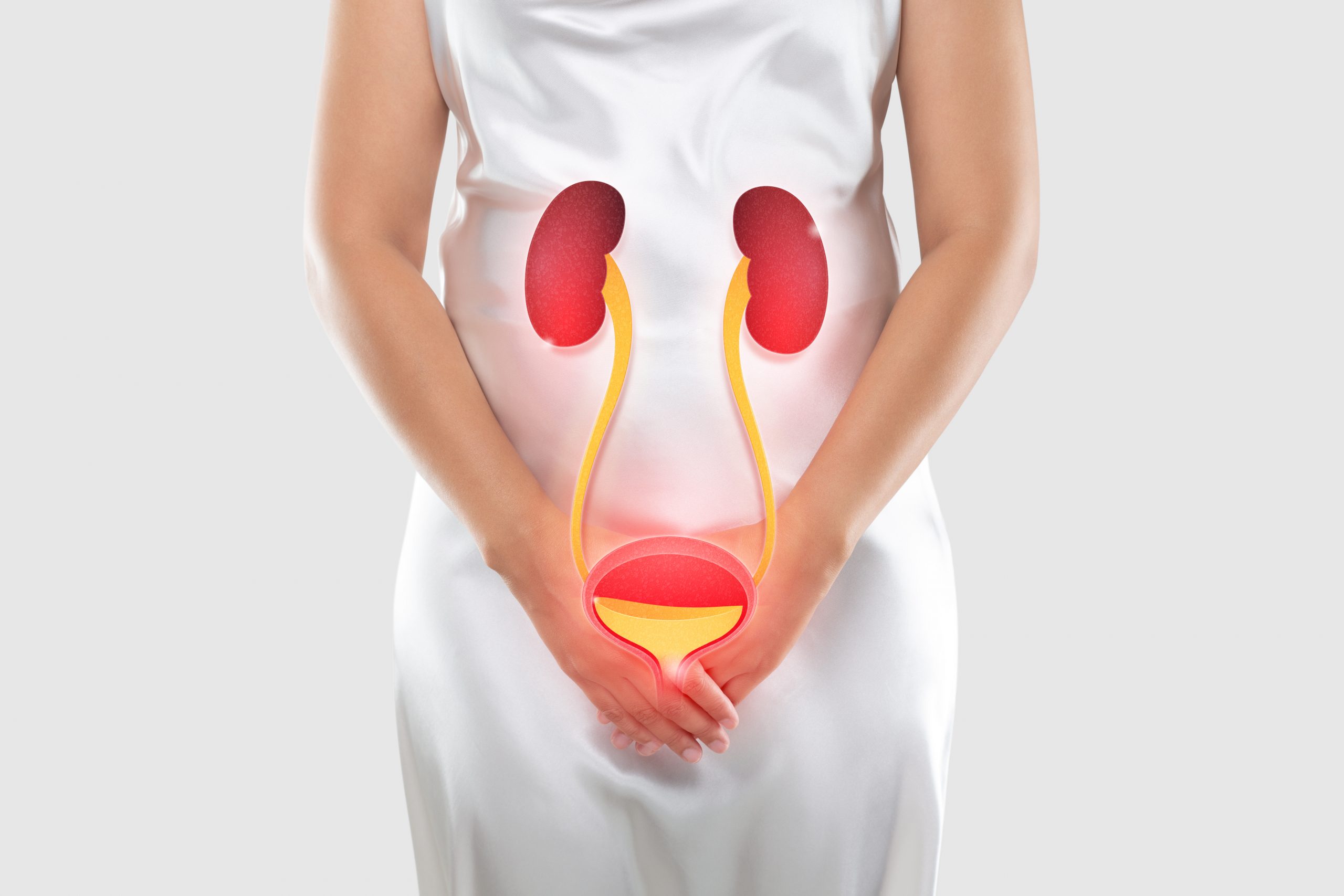Urinary tract obstruction or obstructive uropathy, is a condition where urine is unable to flow through the bladder, urethra, or ureter due to a partial or complete urinary tract blockage.
Urinary Tract Obstruction Can Cause Kidney Damage
An obstruction along the urinary tract can increase pressure and slow urine flow. Urinary tract obstruction can be sudden or slow to develop over a number of days, weeks, or months. During this process, damage may be done to one or both of the kidneys.
Most of the time, urine flows from the kidneys at a very low pressure. If there is an obstruction, urine backs up and creates urinary blockage.
The urine later reaches the small tubes of the kidney, and the holding area called the renal pelvis. This leads to the kidney to swell up, which increases pressure on its inside structures.
The increased pressure due to the urinary tract obstruction may lead to kidney damage and loss of kidney function. Urine flow obstruction can then lead to kidney stones, as well as a kidney infection due to bacteria in the urinary tract not being flushed out.
Kidney failure may also result when both kidneys are obstructed.
Over time, renal pelvis and ureter distention can also thwart the rhythmic muscular contractions that normally move urine from the kidney down through the ureter and into the bladder.
Permanent damage may then result when scar tissue replaces the normal muscular tissue of the ureter walls.
What Causes Urinary Tract Obstruction?
Obstructive uropathy can happen for a variety of reasons that depend on a person’s age and gender.
For instance, an enlarged prostate or prostate cancer is most common in older men. Older adults in general are more prone to tumors and stones.
In young women and men, the most common cause is kidney stones. In children, urinary tract obstruction is often due to birth defects of the posterior urethral valves and other constrictions that block the urethra or ureter.
Hydronephrosis is problem that often affects both kidneys during pregnancy, when the enlarged uterus compresses the ureters. Hormonal changes during pregnancy may also worsen the condition.
Hydronephrosis often is resolved after pregnancy; however, the ureters and renal pelvis may remain somewhat distended. 
Temporary or permanent urinary tract blockage can also result from blood clots or polyps in the ureter; kidney stones trapped in the ureter; digestive tract diseases; injuries like pelvic fractures; and tumors that spread to the bladder, uterus, kidneys, cervix, or colon.
Nervous system disorders can also cause urinary tract obstruction when the nerves responsible for bladder control fail to properly function. In some cases, neurogenic allopathic drugs used to control an overactive bladder can also cause urinary tract obstruction.
Symptoms of Urinary Tract Obstruction
The symptoms of the condition depend on whether the problem is sudden or starts slowly, or if one or both kidneys are involved.
Pain is the most common obstructive uropathy symptom. The pain can be minimal or completely absent with partial obstructive uropathy. With complete urinary tract obstruction, there may be severe pain that leads to nausea and vomiting.
Other symptoms may include fever, weight gain or swelling, and mild to severe pain in the back or on one or both sides of the body. Tenderness or swelling in the kidneys may also arise as urine flows back into the other organs.
When there is a blockage in the ureters, patients may experience a change in urinary habits, including difficulty urinating, reduced amounts of urine, a slow dribbling of urine, a feeling that the bladder isn’t totally empty, blood in the urine, and a frequent urge to urinate—especially at night.
Patient may also experience reduced amounts of urine if one of the kidneys is blocked, though most of the time, both kidneys must be blocked to affect the output of urine.
Possible Complications
Urinary tract obstruction can lead to severe and permanent damage to the kidneys and kidney failure. Pyelonephritis, an infection of one or both kidneys, is common.
Long-term bladder damage may also result when obstructive uropathy is caused by bladder blockage. This is what leads to urine leakage and problems emptying the bladder.
A higher likelihood of recurrent urinary tract infections (UTIs) or cystitis is also common with obstructive uropathy, as well as acute or chronic renal failure and new-onset or poorly controlled hypertension.
Patients with UTIs may have blood or pus in their urine, fever, and kidney or bladder pain.
Diagnosis of Obstructive Uropathy
A doctor will first obtain a full history of patent’s symptoms, which often includes questions about kidney pain, reduced urine flow, and how often he/she urinate.
Typically, additional diagnostic tests are necessary to help doctors better understand the location of the urinary tract obstruction.
Bloodwork and urinalysis may first be given to observe potential signs of obstructive uropathy. Immediate action may be necessary if unusual levels of creatinine, urea nitrogen, or both are present when the obstruction has blocked both kidneys for several hours.
Results from urinalysis are often normal, unless red blood cells and white blood cells are present to indicate an infection, tumor, or stones as the cause of obstructive uropathy.
A bladder catheterization is often considered when there is diminished urine output or a distended bladder. This test will help restore normal urine flow. It can also determine urethral obstruction, which would make it difficult to bring the catheter up to the bladder.
Imaging tests can also be done to reveal urinary tract obstruction, such as the location of the blockage or hydro nephrosis. For instance, ultrasonography is useful in pregnant women and children due to its accuracy and because it doesn’t expose anyone to radiation.
Voiding cystourethrography (VCUG) is another imaging test that can visualize bladder and urethra obstruction with an X-ray after a radiocontrast dye is inserted through a catheter and into the bladder.
Other tests used in the diagnosis of a urinary tract obstruction include a helical computed tomography (CT) scan, MRI (magnetic resonance imaging), invasive pyelography, intravenous pyelography (IVP), or a renal nuclear scan.
Allopathic treatment for Urinary Tract Obstruction
The main goal of an obstructive uropathy allopathic treatment is to remove the obstruction from the blocked ureters.
Here are a few of the ways in which this is done:
- Surgery: Although short-term relief from the urinary blockage is possible without surgery, the cause of the blockage must be removed, and repair of the urinary tract is needed. Long-term relief may require surgery. The kidney may be removed if blockages cause severe loss of kidney function. Surgeons may also need to remove scar tissue, polyps, or tumors that form around the ureters. Urine can flow freely into the bladder once the urinary blockage has been removed.
- Stent placement: Stent placement in the blocked kidney or ureter is a less intrusive treatment method. It is a mesh tube that opens up inside the blocked area. This may provide short-term symptom relief.
- Nephrostomy tubes: These tubes drain urine from the kidneys, and they may help bypass the urinary blockage.
- Foley catheter: When placed through the urethra into the bladder, a Foley catheter may also help with the flow of urine.
- Treatment for unborn children: In some cases, fetal obstruction in the womb may be treated with a shunt or drainage system in the unborn baby’s bladder. The shunt allows urine to drain into the amniotic sac. This type of treatment is used only when the baby’s kidneys suffer from irreversible damage. Most of the time, kidney function and blocked ureters can be repaired after the baby is born.
Nowadays allopath doctors are also prescribing Homeopathic or herbal remedies to treat Obstructive uropathy treatment because there are not any drugs to remove obstruction in allopathy; this treatment will also depend on the cause of obstruction. From a natural perspective, saw palmetto, pumpkin seed oil, nettle root, rye pollen extract, and beta-sitosterol are frequently named remedies that may reduce the symptoms of obstructive uropathy caused by an enlarged prostate.
Cranberry extract and uva ursi are herbal remedies used in the treatment of obstructive uropathy caused by kidney stones or bladder infections.
Final Thoughts of an allopathic doctors
The good news is that most urinary tract obstruction causes can be corrected. However, obstructive uropathy treatment is necessary immediately when symptoms are present, or there may be irreversible kidney damage.
Kidney damage is less likely when urinary tract obstruction is diagnosed and treated quickly, but if there is a severe obstruction that damages both kidneys, a kidney transplant or dialysis may be needed.
If you suffer from urinary tract obstruction, consult your doctor or natural practitioner to help determine the cause and most appropriate treatment. Depending on the cause, natural methods may be able to treat symptoms related to the obstruction.
Homeopathic Treatment for Urinary Tract Obstruction
 Chimaphila Umbellata
Chimaphila Umbellata
Acute prostatitis with dysuria and retention, sensation in perineum as if sitting on a ball. Constant pain in region of kidneys; urine scanty, dark, fetid, thick, with copious sediment. Strangury: constant desire to urinate. Cutting, scalding pain, divided stream; stricture. Urethritis with purulent or profuse mucous discharge. Thick, ropy, bloody mucus in urine. Greenish-black urine. Urine scanty; frequently voided, pressing pain before, burning prickling, scalding and smarting during and after, and vesical tenesmus.
Albuminuria; hematuria, from long-lasting gonorrhea; clots of coagulated blood pass with urine. Renal dropsy. Fullness in region of bladder. In many cases, it is easier to pass urine is passed better by standing with feet wide apart and inclining the body forward.
Magnesia colored
Frequent want to urinate, day and night, with scanty emission. Bladder paresis. An emission can be accomplished only by contraction (bearing down) of the abdominal muscles. Torpor of urethra. Urine, pale-yellow, followed by burning in urethra. Urine passes only by drops, always some seeming to remain behind. High-colored urine, loaded with lithates, accompanies the uterine symptoms.
Pareira Brava
Excruciating pains in lumbar region; pain radiates from to groin, following course of ureter. Bruised pains in region of kidneys. Micturition difficult, with much straining only in drops, with sensation as if urine should be emitted in large quantities. Dropsical swelling of feet and legs; discharge of mucus from urethra, with shooting pain in orifice of urethra. Urethritis with prostatic trouble. Dribbling of urine after micturition.
Dysuria: since confinement, two weeks previously, cannot pass urine in any position except on hands and knees. Urine smells strongly of ammonia, and contains a large quantity of viscid, thick, white mucus. Black, bloody, foaming urine, depositing a brick-dust sediment of uric acid; deep red and mucous urine. Almost cartilaginous induration of mucous membrane of bladder.
Enlargement of prostate gland, with retention of urine; pains extending down thighs. bladder neck obstruction cases where intense straining efforts to pass urine are required.
Thiosinaminum
Adhesions. Cicatrices. Lupus. Lymphatic glands, enlarged. Rectum, stricture of. Strictures. Tinnitus aurium. Tumors. Dissolving scar tissue, tumors, enlarged glands, strictures, adhesions.
The formation of connective tissue over a scar anywhere in the body can affect the output of the urine. Thiosinaminum dissolves scars by softening the tissue before eliminating the marks.
Clematis
Increased secretion of urine. Purulent urine. Urine turbid, milky, dark, with flakes of mucus and frothy. Secretion diminished; the last drops cause violent burning; or secretion slow and in a small stream. During the emission of urine, pulling in the spermatic cord. Micturition (Burning sensation and smarting in the urethra). Stitches in the urethra; stitches from the abdomen into the chest. Contraction of the urethra, with the urine stopping suddenly, or only flowing drop by drop; jerk-like tearing in fore part of urethra in the intervals. Weak and slow urinary stream from bladder neck obstruction. Urine frequency is increased with continual desire to pass water.
Conium Maculatum
Pressure on the bladder, as if the urine were going to issue forthwith violence (with stitches); worse when walking, better when sitting. Nocturia, frequent, and sometimes involuntary. Flow of urine, attended by violent pain. Urine thick, white and turbid; or urine red. Retention of urine or difficult emission of urine, which flows only drop by drop. Wetting the bed.
Diabetes, accompanied by great pain. Polyuria (Frequent inclination to emit urine), which is clear and aqueous. Viscid mucus, pus from the urethra. Emission of blood, sometimes with difficulty of respiration. The urine stops suddenly and does not begin to flow again for some moments. Burning sensation and shootings in the urethra, especially after the emission of urine.
Cantharis 
Retention of urine, with cramp-like pains in the bladder. Urgent and ineffectual efforts to urinate, with painful emission, drop by drop, difficult emission of urine, in a weak and scattered stream. Increased secretion of urine. Urine, pale yellow, or of a deep red color. Sanguineous mucus from the bladder. Emission of blood, drop by drop. Purulent urine. Burning smarting. Incisive pains in the front part of the urethra, during urination, and afterwards. Sharp, tearing, and incisive pains, successive pulling and pulsations in the urinary organs. Burning, stinging and tearing in the kidneys. Pressing pain in the kidneys, extending to the bladder; along the ureters; relieved by pressing upon the glans. Inflammation and ulceration of the kidneys, of the bladder, and of the urethra. Exceedingly painful sensibility of the region of the bladder on its being touched.
Natrum Muriaticum
Red sediment, resembling brick-dust. Discharge of mucus from urethra, after the emission of urine. Discharge of mucus from urethra during and after urination, causing itching and biting, sometimes yellowish, as in gonorrhea. After micturition spasmodic contraction in abdomen; burning, drawing, and cutting in urethra. During micturition stitches in bladder, smarting, burning in urethra; smarting and soreness in vulva. Urine dark, like coffee, or black.
Merc Solubilis
Urine acrid; turbid; too frequent; complaints while passing, and after. Polyuria, sometimes with abortive efforts, or with scanty emission. The stream of urine is excessively small. Irresistible, sudden desire to urinate. Frequent and copious emission of urine, as in diabetes, with great emaciation. Involuntary emission of urine. Urgent want to urinate. The quantity of urine emitted is greater than the quantity of fluid drunk. Nocturia. Emission of urine drop by drop. Urine of a deep color, or red, or brown, or white, as if mixed with flour or chalk, or of the color of blood.
Offensive, turbid urine, with sediments sediment. Sanguineous, pungent, or sour-smelling urine. Pulsation, incisive pains, burning and shooting in urethra, even when not urinating. Thick greenish (or yellow) discharge from urethra, more at night, (gonorrhea) with phimosis; chancroids.
Sepia
Ascarides. Baldness. Bladder, irritable. Cancer. Change of life. Chloasma. Chorea. Condyloma. Cystitis. Smarting pain may appear while urinating. Urine may be offensive. There is pressure on bladder always with sensation as if bladder is full. Painful bearing down is also felt in pelvic region.
Lycopodium Clavatum
Urgent want to urinate, with too frequent emission, with discharge of large quantities of pale urine. Frequent micturition by night, with scanty and rare discharges by day. Dark urine with diminished discharge. Greasy pellicle on the urine. Involuntary micturition. Discharge of blood from the bladder, painless. Old thickening of bladder with irritable urethra. Foamy urine. Urine deep colored, with yellow or reddish sediment or clear, transparent urine, having a heavy, red, crystallized sediment.
In typhus fever, where the patient is in a very low state, and cannot retain the urine, colic of babies, with sediment on the diaper. A very severe pain is felt in the back every time before urinating. Turbid, milky urine, with an offensive purulent sediment; dull pressure in region of bladder and abdomen; disposition to calculi; cystitis. Hematuria from gravel or chronic catarrh, sometimes with paralysis of the legs, and constipation. Other attending features to use Lycopodium are difficulty starting urine stream, straining to pass urine and frequent urination mostly at nighttime. It is also indicated for treating bladder stones.
Baryta Carbonica
Frequent and urgent inclination to urinate, with abundant emission, during urination, burning in urethra. Bladder neck obstruction. Urinary frequency is increased with inability to retain urine. Nocturia. Burning may be present while urinating.
P. S: This article is only for doctors having good knowledge about Homeopathy and allopathy, for learning purpose(s).
For proper consultation and treatment, please visit our clinic.
None of above-mentioned medicine(s) is/are the full/complete treatment, but just hints for treatment; every patient has his/her own constitutional medicine.
To order medicine by courier, please send your details at WhatsApp– +923119884588
 Dr. Sayyad Qaisar Ahmed (MD {Ukraine}, DHMS), Abdominal Surgeries, Oncological surgeries, Gastroenterologist, Specialist Homeopathic Medicines.
Dr. Sayyad Qaisar Ahmed (MD {Ukraine}, DHMS), Abdominal Surgeries, Oncological surgeries, Gastroenterologist, Specialist Homeopathic Medicines.
Senior research officer at Dnepropetrovsk state medical academy Ukraine.
Location: Al-Haytham clinic, Umer Farooq Chowk Risalpur Sadder (0923631023, 03119884588), K.P.K, Pakistan.
Find more about Dr Sayed Qaisar Ahmed at:
https://www.youtube.com/Dr Qaisar Ahmed
